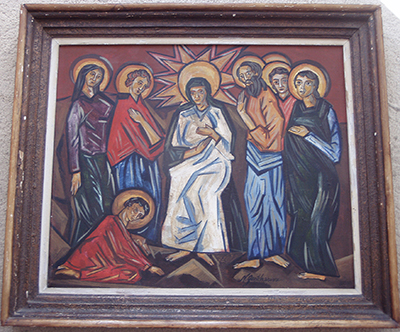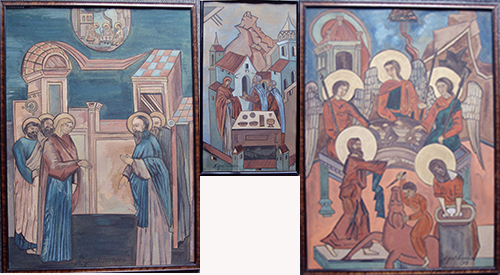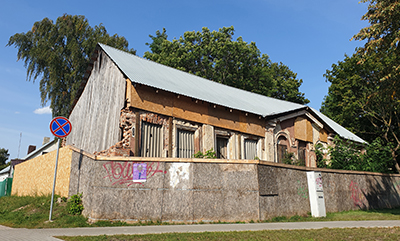The State Theatre in Kaunas. My first contacts. Part 2

The cultural life of pre-war Lithuania was closely connected with prominent figures of Russian art. Here were invited Russian artists, theatre directors and ballet stars who were living in Russia as well as emigrated. To write the correct information about this period is very complicated. Soviet Russia ignored all people who emigrated from a country. They delete this page from history. In the Russian occupation period (1945 – 1989) Lithuania hid and hated Russia. The articles have been written with different information. The main thing was to protect Lithuanian culture.
It was not very important to write about Russian people who emigrated from Russia. I found that maybe more than 100 people (artists, actors, theatre directors) had connections with Russian culture before the second war.
And I started to research who from an older generation is still alive and maybe they remember who had paintings, sketches or something about Kaunas State Theatre.
Zenonas Varnauskas (1923 – 2010)
Varnauskas was famous for his collection. He was an educated person with good taste and knowledge. He knew many famous people who worked in Kaunas State theatre and he knew all about cultural life in Kaunas city 1920 – 1940. It was very important to me.
To visit Z. Varnauskas home was not so easy. The doors have not been opened to everyone. I was lucky because Z. Varnauskas was my father’s friend. I called him by phone and we agreed to meet at his house.
He did some tests for me. Before we go to look at what I have – he said, please have a look for these three small paintings. Here were three watercolours not signed, painted by different artists. Tell me by the row – he said, which one is the best, which one is in the middle and which one is the worst.
I looked and put watercolours in succession. From best to worst in a few seconds. Correct – he said, nobody can’t pass this test. How do you know? – He asked me again. (And this question he repeated again and again when we become the friends)
We went upstairs to the room where he kept his collection. The shelve on the left hand side was loaded with a few thousand paintings, sketches painted on paper. Shelve size approximately 3 meters height and 5 meters length, width 1 meter. In the other smaller shelve right ahead, he kept small size sketches. The room was piled with stacks of paintings on the floor. Everywhere oil paintings on the walls, mostly framed. Some paintings were covered with cloth; nobody could see it without Varnauskas permission.
He hasn’t allowed nothing to touch. We just sit and talk about art, history, culture. About times when he was young. I prudently sometimes asked about some person. And again he asks me this question – how do you know?
He indirectly becomes my guide in my search. But he didn’t know it. We talked for a few hours and finally he showed me a few artists M. Dobuzhinski sketches made by pencil between 1936 – 1939. He told me a lot about M. Dobuzhinsky, theatre and Dobuzhinsky private art school.
Our meetings with Z. Varnauskas continues for about 10 years. I had new questions, wanted to see more sketches he has and we meet every week. I spent a few hundred hours listening about art and theatre. And always I got a new direction in my mind where to go next.

I had a big interest in having a look at Varnauskas collection too. I had a chance to see about 20 sketches in every meeting.
People spread rumors that Varnauskas took home the main part of the art archive from Kaunas Art school (Kaunas School of Arts was a public school of arts, which operated from 1922 to 1940 in Kaunas, Lithuania). Also, I heard that Varnauskas got all M. Dobuzhinsky estates. Dobuzhinsky did not return to Lithuania 1939. He avoided the Soviets and stayed in Germany, later living in the United States.
Varnauskas told me another story about A. Galdikas (1893 Skuodas, Lithuania-1969 New York, United States) Adomas Galdikas was a Lithuanian painter, graphic artist, scenographer and art collector. He ran away from Russians occupation in 1945 to Germany, later moved to the United States. He left all art collection at a house in Kaunas.
The house was nationalized 1949, officers fill up a cart with paintings to the top. Stableman moved the cart to find the place where to burn this art. Varnauskas who lived close saw it. He paid the man 15 rubles and took all paintings home. Big enough amount (100 old rubles were changed to 1 new ruble after monetary reform 1961, very good monthly wage was 100 rubles after 1961)

Continued to part3…